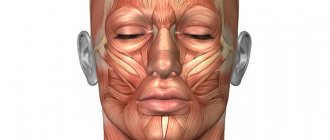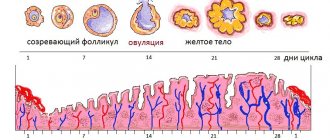Stress is a dangerous emotional state inherent in most people of our time. It not only affects our health, but also affects our colleagues and loved ones and can lead to major depression and sleep disturbances.
Every person should be able to deal with stress
Therefore, you need to deal with stress. Exercises to relieve stress will help with this. According to doctors, stress is a combination of the body’s reactions to stimuli or threats. They manifest themselves in a state of physical or moral stress.
What is proper breathing and why does it help with stress?
What is proper breathing?
Breathing is the most important function of the human body that supports life. It is completely automatic, and in a normal situation people do not notice how they breathe and do not make any effort to do so. Normal, uniform functioning of the lungs provides the blood with the required amount of oxygen, regulates metabolic processes and performs a number of other tasks:
- breaks down complex organic (and inorganic) nutrients into simpler and easily digestible ones - the process of oxidation;
- participates in the production of the required amount of energy;
- stimulates mental activity (the brain quickly dies without oxygen).
Breathing must be deep and even in order to perform all functions correctly. What happens at a moment of extreme psychological stress? Inhalations become shallow and short. The body does not receive the required amount of life-giving gas - and health problems begin:
- fast fatiguability,
- irritation,
- insomnia or, conversely, pathological drowsiness,
- prostration,
- weakening of the immune system,
- exacerbation of chronic or emergence of new physical diseases,
- nightmares,
- progressive anemia and much more.
All these are the consequences of improper breathing caused by stressful situations. Moreover, they are often permanent, especially in the living conditions of modern cities, which set an incredible pace of life (see Constant stress ).
A variety of breathing techniques for relieving stress - special sets of exercises designed taking into account human needs - help to cope with a serious problem and restore not only mental and physical health, but also joy in each new day, energy, and a positive outlook. Knowing them, you will learn to breathe deeply - and resist adverse factors and influences of the external environment.
Understanding proper breathing does not vary much depending on the specific technique. The main condition is uniformity and depth. You should inhale deeply, without gasping for breath. This is the only way to maintain composure even in the most difficult situations, remain calm and overcome panic. The body will receive the necessary substance and start all natural chemical reactions regardless of what happens - that’s good. And the brain, not left without a vital portion of oxygen, will retain the ability to reason logically without falling into hysterics.
And now – specifically about some popular techniques.
Stress management
Many scientific works are devoted to the topic of counteracting stress. The problem of its occurrence has been scrupulously studied from all sides. Stress itself can be divided into the following types:
- physical – the influence of weather conditions (heat, cold, sudden change in temperature),
- chemical – exposure to toxic substances,
- psychological – strong positive or negative emotions,
- biological - injuries, diseases, various types of overload, childbirth in women.
Even in ancient China, mechanisms for relieving emotional stress were developed:
- meditation,
- acupuncture,
- dancing,
- playing music,
- massage,
- aromatherapy,
- calligraphy.
Chinese scientists believe that tension on the body contributes to stress. And all of the listed psychological and physical methods of influencing the body are aimed at relaxation effects: restoring mental balance, proper breathing, reducing stress levels. They should help mental health recover.
Calligraphy perfectly relieves nervous tension
What should breathing be like according to yoga?
The goal of yoga is to teach a person to control his own body as much as possible, and above all, breathing. The ancient teaching treats this function very carefully, devoting a lot of time to it. Students must learn to control the work of their lungs and feel how the air passes inside: unhindered, deep, correctly.
According to yoga, breathing exercises to relieve stress help to establish a strong connection with the inner world, activate powerful energy flows and bring you into a state of complete calm or, conversely, slightly excite you - depending on what the person wants to achieve. This is great for quickly relieving panic attacks and stress caused by overexcitement.
The correct method of breathing is only with the stomach. It is in this case that the entire volume of the lungs is used, and oxygen is supplied in maximum quantities. Yogis advise learning from children. If you watch how a baby breathes, it will become obvious: his stomach literally moves up and down. Moreover, air always enters through the nose.
There are three types of breathing in total.
| Breathing type | Organs involved | Advantages and disadvantages |
| Clavicular or superior | Only the upper part of the lungs, actively working the shoulders and chest | A small volume of the lungs is filled, while the body wastes a lot of energy. |
| Intercostal, or middle | Middle part of the lungs. The intercostal muscles are actively working. | More oxygen is supplied, but still not enough. |
| Diaphragmatic, or lower | Diaphragm. The stomach “breathes”, while both the upper and lower regions of the lungs are filled. By arching downward, the diaphragm simultaneously produces a natural massage of the internal organs of the peritoneum. | The most correct type. Delivers a large volume of air. |
True yogis use all three types simultaneously, maximizing the strength and capacity of the lungs. Moreover, one of the main conditions: actions occur automatically, without external control. Otherwise, a person spends energy on monitoring the work of his own respiratory system and, as a result, loses his natural rhythm.
Relaxation, kneeling, detachment from the outside world are important conditions for exercise. Stress breathing will help you only if you manage to achieve maximum relaxation and forget about control.
Fiery (cleansing) breath
In the native language - “kapalabhati”, or “cleansing of the skull”. Classic sitting position (Turkish, on your knees or in another comfortable position), the back is straight. The eyes are closed, the facial muscles are relaxed. We close the index and thumb of both hands into a ring, and straighten the rest and point them upward, opening the palm.
We breathe through the nose, concentrating on the fullness and depth of inhalation. When completing the exhalation, you need to sharply contract the abdominal muscles, blowing out the remaining air (a similar movement occurs when blowing your nose). This is followed by a long inhalation, during which the abdominal muscles relax.
You should start with three sets of 10 repetitions, gradually increasing to 108 in one approach. Rest for about half a minute between cycles. Contraindications – formation of hernias in the abdominal space, hypertension, problems of the cardiovascular system and lungs.
Complete yoga
It is considered the deepest and uses the entire volume of the lungs. By performing this exercise daily, you will receive the necessary charge of life-giving energy and feel a significant improvement in your general condition.
The initial position is the same as in the one described earlier, the only thing is that it is recommended to sit in a Turkish style, especially for those who have just begun to master the technique.
The yogi uses all three types of breathing simultaneously - the main secret of the exercise. To do this, first slowly exhale all the air, and then inhale, starting with the lower type of breathing. We move the stomach forward, filling the lower part of the lungs with oxygen. We expand the chest by performing the second type - air enters the middle part of our natural bellows. We move on to clavicular breathing, involving the collarbones and neck, lifting the upper part of the ribs. At the same time, your shoulders should straighten a little (not rise!). This is how the inhalation ends.
A complete exhalation is carried out in the same order: the abdomen (diaphragm), middle ribs and chest, collarbones and neck. When breathing in this way, maintain a feeling of inner comfort and do not overexert yourself, otherwise you will not achieve the expected effect. Beginner yogis are recommended to carry out 3 cycles of full breathing daily, gradually reaching 10-14 times.
Contraindications: any pulmonary pathological process, cardiovascular disease or hernia.
What does all of this mean?
Let's now analyze the experience that you gained by observing your own breathing. Because this experience contains so much information, we will narrow our analysis and focus on those aspects that relate to stress (after all, the topic of our article is related to stress).
About how we hide and try to hide, hiding our breath.
Breathing is very subtly connected with emotions. By observing a person's breathing, you can learn a lot about his internal state. Stress often leads to the fact that breathing begins to hold back and freeze. This is an instinctive reaction that is not unique to humans. If an animal experiences fear, it tends to hide, and breathing then becomes barely noticeable.
In order to understand what we are talking about, watch your own breathing in different situations. Pay attention to how you react if something unpleasant and alarming happens. Most likely, you will find that at such moments you begin to hold your breath.
If a person is in a state of chronic stress, he involuntarily holds back his breathing, and it becomes shallow and irregular. Usually, the chest moves barely noticeably, and the stomach does not move at all. Subjectively, this manifests itself in sensations of stiffness and constriction of breathing.
On the relationship between the duration of inhalation and exhalation.
By the ratio of the duration of inhalation and exhalation, you can also say a lot about the internal state of a person. The fact is that inhalation and exhalation have different physiological effects on the body. Inhalation excites and tones the nervous system, and exhalation, on the contrary, relaxes and calms. Above we talked about the freezing reaction, which occurs in a situation of stress and is rooted in animal instincts, when you need to hide and lie low.
But in fact, this is not the only way to respond to stress. There is another one called the fight or flight response. This is also an instinctive reaction when, in a situation of danger, the body mobilizes and tones up: the heart begins to work more actively, as a result, the muscles are better supplied with blood, receive more nutrition and become stronger. All this is necessary in order to provide decent resistance in a fight or quickly escape.
What happens to breathing at this moment? Breathing becomes more intense as metabolic processes begin to proceed faster and the body's need for oxygen has increased. Inhalation becomes more active.
In a state of chronic stress, this reaction can become entrenched. It looks like this: a person experiences an attack of severe anxiety, and at the same time he inhales very actively, deeply. The duration of inhalation is longer than the duration of exhalation. As mentioned above, this type of breathing excites and tones the nervous system, so a person will not be able to calm down until he changes the duration of exhalation so that the exhalation is longer than the inhalation.
About thoracic and abdominal breathing.
Have you ever seen how babies breathe? They breathe with their bellies. This is the most natural way of breathing, which allows you to fill your lungs with air as much as possible. During times of stress, muscle tension typically occurs in the diaphragm (this is the area where the chest cavity ends and the abdominal cavity begins). The expression “sucked in the pit of my stomach” is precisely about tension in this area. The resulting tension prevents full abdominal breathing. Therefore, a person under stress, as a rule, uses only the chest for breathing. In addition, stereotypes common in society contribute to blocking abdominal breathing: the stomach should be flat. Therefore, many people try to pull their belly in, while preventing deep belly breathing.
So, a person under stress often blocks breathing with his stomach, and many people become so accustomed to such blocking that they begin to use only the chest for breathing. Essentially, this indicates that there is always some level of stress present in the human body.
What happens if you start breathing from your stomach? Abdominal breathing is very beneficial for health, and if I now begin to list all its beneficial properties, the volume of this article may double. Therefore, I will stick to the topic of the article and talk only about stress.
During abdominal breathing, the diaphragm actively works. This is a muscle located inside the body and separates the thoracic and abdominal areas. The work of this muscle stimulates the vagus nerve, and as a result of such stimulation, the part of the nervous system that is responsible for relaxation is activated.
The most important thing to remember is that belly breathing at a physiological level leads the nervous system to a state of relaxation and peace. This simple and most effective mechanism is always with us, but most people do not know about it and, instead of taking advantage of its capabilities, chronically suppress abdominal breathing.
Chinese breathing exercises
The Chinese technique of proper breathing is based on the deep Eastern wisdom of the people. By doing simple exercises on your own, you will not only get rid of constant stress and find inner harmony, but also lose weight. In general, almost all breathing exercises help in the fight against excess weight, primarily because they normalize metabolism.
The well-known Chinese system is called “jianfei” and consists of a whole set of diverse exercises. But we will introduce you to the most effective and uncomplicated ones.
Wave
Eastern nutritionists advised using this exercise as a replacement for one of the meals, and best of all, dinner. However, this is not necessary, but it will still be of great benefit if you start on an empty stomach.
The most comfortable position is lying on your back. Having relaxed, you need to lower your legs to the floor, resting your feet on the surface. Place one palm on your stomach, the other on your chest. Slowly draw in your stomach first, and then lift your chest, inhaling air. You will get the necessary wave-like movement, which gives the exercise its name. When you exhale, the chest retracts and the stomach inflates.
It is recommended to perform about 40 such cycles. However, if you feel nauseous or dizzy during exercise, stop immediately. Watch your breathing rhythm: it should not differ from natural, thereby causing discomfort.
Frog
According to Chinese practice, it is this exercise that most effectively restores the nervous system, returning a person to a sense of inner peace. With your feet shoulder-width apart, sit comfortably on a low chair. The lower leg and thigh form an almost right angle. An important condition: the head is disconnected from various thoughts and focused only on performing the exercise.
Place your elbows on your knees. Girls clench their left hand into a fist, boys clench their right hand. The hand of the free hand clasps the wrist of the one that is clenched. The forehead rests on the fist, the eyes are closed, the body is relaxed. The abdomen must be completely filled with air, while alternating inhalations and exhalations through the nose and mouth. Each time the breath is held for about 5 seconds.
Completion time is a quarter of an hour. If you feel dizzy or have other unpleasant symptoms, change the pace of your inhalations and exhalations.
Lotus
This is a whole complex consisting of three stages. The lesson is designed to achieve mental balance, relieve fatigue, and get rid of the feeling of tension.
- We breathe evenly, deeply, using the diaphragm. Full concentration on your own condition, disconnection from external irritating sources. The duration of the stage is 5 minutes.
- We breathe easily, naturally. The main task is to achieve silent, but at the same time deep and even inhalations and exhalations. Also 5 minutes.
- We breathe at our usual pace, without focusing on the process itself. We think about something pleasant and relaxing. Duration – 10 minutes.
The 3 exercises described form the basis of the Chinese breathing exercises Jianfei. They can be performed one after another (“wave”, “frog”, “lotus”), or separately, depending on your well-being and mood. Contraindications: hypertension, problems with the spine (see Panic attacks with cervical osteochondrosis ), the presence of stones in the bile ducts.
Psychological training
Autotraining. “Quick action” technique for relieving psycho-emotional stress. Self-hypnosis is widely used in sports, medicine, pedagogy and other areas that interact with people.
Dissipation of attention. Concentrating on the little things will allow you to abstract yourself from the situation as a whole for a while and help you make a difficult decision easier.
Decrease in importance. “It’s all nonsense compared to the world revolution.” This quote perfectly describes our situation. The more globally we look, the smaller and insignificant our problem will seem.
Knowledge is power. Information has always been one of humanity's strongest weapons in the fight, so why not use it in our situation? Gather as much information as possible about the problem and you will see possible options for action.
Modeling. The more development options you can come up with, the easier it will be to choose the most appropriate solution to your situation. This will also provide an opportunity to mentally prepare in advance for not the most pleasant options.
Time is the best advisor. Sometimes it's better to let things go for a while. Delay will relieve emotional stress and nervousness. It will allow you to look at the problem with a “sober” look.
Laughter prolongs life. If you approach a problem with humor, it will cease to be a problem. Or at least it will be much easier to solve. Humor has always been a good way to relieve negative emotions.
Chocolate (sweet). Favorite folk remedy. Scientists have proven that sweets reduce stress by 46% and produce the hormone of happiness, “serotonin.” The main thing is not to overdo it.
Chocolate promotes the production of the hormone serotonin
Breathing exercises of the ancient Slavs
Slavic breathing exercises for stress are an effective means of achieving mental balance. It helps to cope with depression, feel an influx of vital energy, improve mood and overall well-being. Realizing that a person draws strength not only from physical food, but also from spiritual food, and, in particular, from the air entering the body, our ancestors attached great importance to the correct system of inhalation and exhalation. Some exercises are given below.
Full breath
The essence is the same as in yoga: first the diaphragm works, filling the lower part of the lungs, then the ribs, sternum, collarbones, neck. Only between inhalations and exhalations is a short pause equal in time to the inhalation (or exhalation) itself. Air enters and leaves the body only through the nose.
Delay
Position – lying on your back. When inhaling, a person holds his breath, allowing vital energy to permeate all cells. Hold the air inside as long as you can stand it, then exhale powerfully through your mouth and take full breaths several times, and then repeat the exercise while inhaling.
Contraindications: the same as in the techniques listed above.
Prevention and treatment of stress
To help the body cope with stress, experts have developed exercises to relieve tension, which include three main complexes: breathing exercises, relaxation exercises, and meditation.
Complex 1. Breathing exercises
Take a deep breath so that the necessary amount of oxygen enters the body, sufficient for the full functioning of the brain and its stable functioning.
Focus on your breathing. Breathe slowly and calmly, think about something pleasant. Relax your body as much as possible.
Slowly, through your nose, take several deep breaths. Try to inhale and exhale at equal intervals. To do this, count in your head. This exercise will promote sound and restful sleep.
The more you relax all the muscles in your body, the more it will make breathing easier.
Close your nostrils one by one and take deep breaths. Repeat the exercise several times. According to experts, this exercise works no worse than a cup of coffee.
Complex 2. Muscle relaxation
The exercise has a very simple technique. Tighten your body muscles tightly for a few seconds, and then concentrate on the feeling of relaxation that arises. This technique was developed by physician E. Jacobson in the 1920s.
>Take a deep breath and hold it for a few seconds, then relax and return to normal breathing.
| Hands | Squeeze your hand as tightly as possible. Tension should appear in the hand and forearm. As you exhale, relax your hand, concentrating on the feeling of relief. Repeat the same for the second hand. |
| Neck | Raise your shoulders as close to your ears as possible. Without changing your position, tilt your chin towards your chest. Tilt your head back, turn from side to side, then relax. |
| Face | Raise your eyebrows as high as possible, open your mouth wide (as if you are pretending to be very surprised). Close your eyes, frown and wrinkle your nose. Clench your jaw tightly and move the corners of your mouth back. |
| Breast | |
| Back and stomach | Tighten your abdominal muscles, squeeze your shoulder blades together and arch your back. |
| Legs | Keeping your knee in a tense, bent position, tighten your thigh muscles. Pull your foot towards you as much as possible and straighten your toes. Extend your ankle and flex your toes. |
Repeat the breathing complex several times. You will feel relief almost immediately.
Complex 3. Meditation
The concept of “meditation” involves deepening into oneself and visualizing the desired results. A quiet, calm place associated with comfort is suitable for the exercise. Extraneous factors need to be excluded; to do this, use quiet, relaxing music.
It is better for beginners to carry out the exercise with their eyes closed, this will make it easier to concentrate. Doing the exercise with your eyes open, choose an exit point. This way you will be less distracted. The focal point should be filled with meaning so that it is easier to cling to it.
Visualization should convey a positive emotion and help you calm down. This image could be your favorite cafe, a river next to a house in the village, a park alley, or any calm and pleasant place for which your imagination is sufficient.
Try to use all your senses. If this is a cafe, feel the taste of your favorite coffee, hear the sound of rain outside the window, the splash of a river in the village, the rustle of leaves on a park alley.
The brighter and clearer you can imagine everything, the better the effect will be. Contrary to what many people think, this exercise takes little time, but the results are noticeable immediately.
Breathing exercises by Strelnikova
This is an original set of breathing exercises aimed not only at combating stress, but also at improving overall health. The developer of the method is Alexandra Strelnikova, a famous opera singer born in 1912. She loved her procession very much, devoting herself to it with all her soul, but due to poor health, she lost her voice early.
The illness would have broken the girl, but she turned out to be strong and decided to resist fate. Together with her mother, young Sasha came up with and implemented a set of breathing exercises that restored her ability to sing. Strelnikova died in the 80s of the last century, performing opera roles until the end of her life. She gave people not only wonderful performances, but also a health system effective for respiratory diseases and their consequences (sinusitis, bronchitis, pneumonia).
The technique is based on proper breathing and the necessary physical activity, which causes an increased need for oxygen in the human body. A sharp, deep breath is the basis of the technique. It will not be possible to describe all the exercises, since they are closely interconnected and have a certain sequence. To understand the essence of Strelnikova’s technique, you need to familiarize yourself with her works.
As many years of experience from different countries, peoples, researchers and authors show, breathing exercises are an effective means of dealing with stressful situations. It restores the proper functioning of all functional systems, significantly improves well-being, and helps get rid of extra pounds. And most importantly, it does not require much physical effort or trips to the gym. All exercises can be done at home, no more than 15 minutes, and you will receive a positive charge that changes your mood for the better!
The Importance of Mindful Breathing
Controlling your breathing is important to achieve harmony. When under stress or nervous tension, the anxiety hormone adrenaline is released into the blood. It causes muscles to tense, stimulates a rapid heartbeat and strong shallow breathing. At the same time, the ability to draw conclusions and make decisions is practically turned off: the brain begins to work in a mode that would allow it to control the movements of the body when fleeing or fighting.
While performing breathing exercises, the body is saturated with oxygen, and due to concentration on the exercises, the functioning of the endocrine system changes. Pleasure hormones (endorphins) begin to enter the blood, which promote muscle relaxation and help quickly restore the ability to build complex logical structures.










